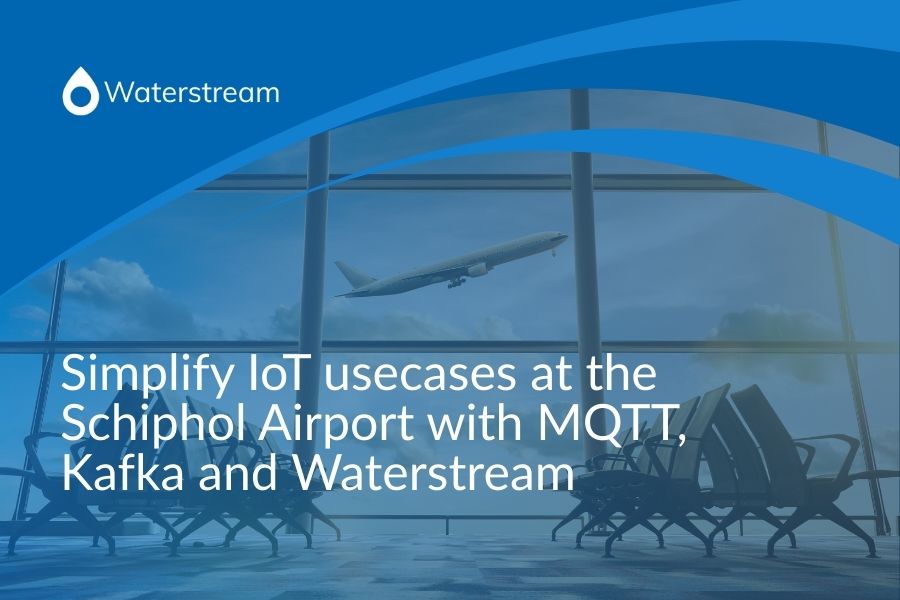
The mission of the IoT initiative at the Schiphol airport is to provide an infrastructure as a service that contractors (e.g., B2B companies) and the airport can leverage to share data with the Schiphol Group.
The goal is to accelerate and simplify the onboarding of new contractors, ideally up to a self-service fashion and allow them to improve their own services with data from sensors installed at the airport.
The cornerstone of the strategy is the messaging backbone that the IoT team at Schiphol created using Kafka at its core. At one end, it collects data from sensors and assets deployed in the airport, usually leveraging LoRaWAN in combination with HTTP and MQTT. On the other side, services on Kubernetes process the ingested data to create events or messages that, in the same way, are stored in Kafka. B2B customers and contractors receive such events or notifications again via the MQTT protocol. With this knowledge, third parties can manage their on-site assets and services more independently thus enhance their offerings. Current use cases include predictive maintenance, passenger feedback, and asset tracking.
In this context, Waterstream will play a key role. Waterstream works on both ends, providing an MQTT broker that translates the data from MQTT to Kafka and vice versa without requiring an additional integration layer with Kafka. Waterstream makes the integration easy so the team can focus more on the business case instead of solving integration problems.
The benefits of using Waterstream will grow as the IoT team works to reduce or eliminate the use of HTTP in favor of the MQTT protocol to increase scalability and integration with multiple sensors.
This blog post is co-authored with Werner de Bruijn and Tristan Godfrey from the Schiphol Group
